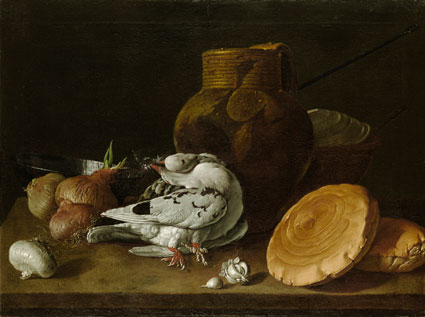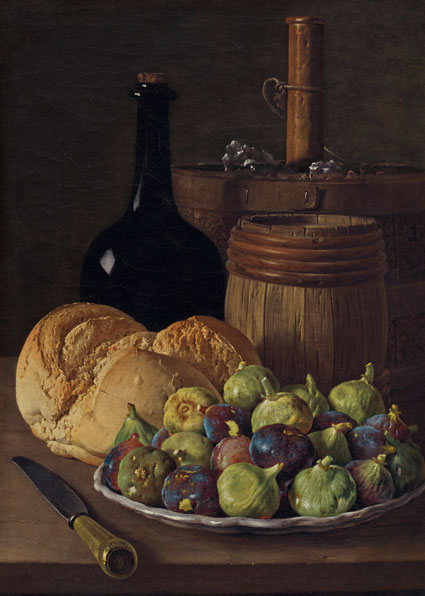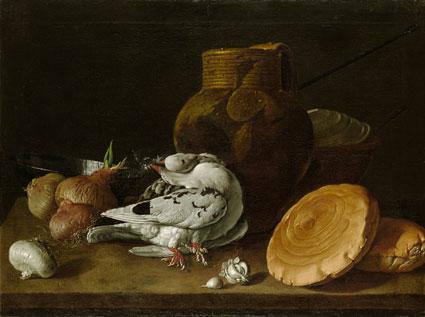Most visitors who have seen our Luis Meléndez show note the spectacular fruit and vegetables in the still lifes. But, for my husband, a fourth-generation flour expert, it was all about the bread. It’s always about the bread.
When we’re out to dinner, an assessment typically begins the moment the bread basket arrives. Usually, with just a cursory glance, my husband tells me what bakery the bread came from, whether it is truly fresh baked or frozen and then partially baked off at the restaurant, and how I can expect it to taste and feel in my mouth—all just by looking! The bread savant routine finally came in handy earlier in the week when he stopped by to see the Meléndez show.

Luis Meléndez, Still Life with Pigeons, Onions, Bread, and Kitchen Utensils, c. 1774, Wadsworth Atheneum Museum of Art, Hartford, the Ella Gallup Sumner and Mary Catlin Summer Collection Fund
Of the dozen paintings in the show featuring bread, this is the one my husband really fixated on. He pointed out a detail in the background that I’d never noticed—on the right-hand side of the painting, there’s a ridged pan resting in a bowl. Judging by the concentric pattern on both the vessel and the loaf, that’s likely what this bread would have been baked in, with a lid placed on top. (You can tell there was a lid because of the crease in the middle of the bread; this is where the dough oozed through.) My husband also noted that this bread would have been quite dense because Meléndez was painting during a time before commercial yeast became available. It was likely baked in a hearth oven, with wood beneath.

Luis Meléndez, Still Life with Figs and Bread, c. 1770, National Gallery of Art, Washington, Patron’s Permanent Fund
For this loaf, he rendered quick judgment: “Don’t even thinking of using it for a sandwich!” Way too crusty and difficult to cut neatly because of the deep split top created by scoring the surface of the loaf before baking. Fruit, fittingly, would have been a perfect accompaniment.



